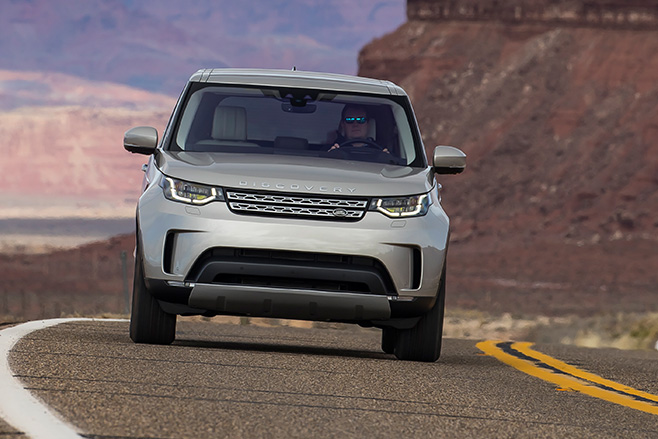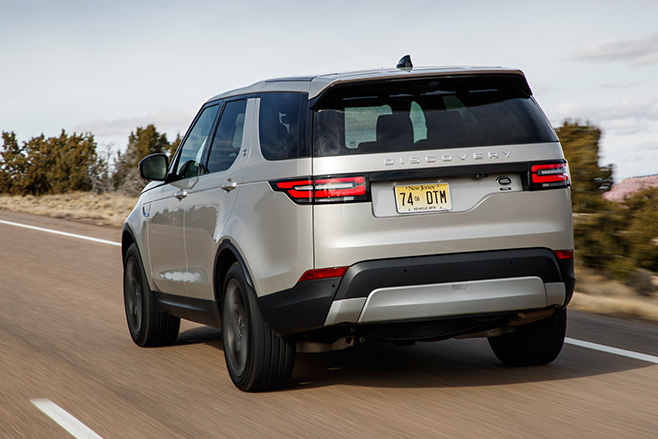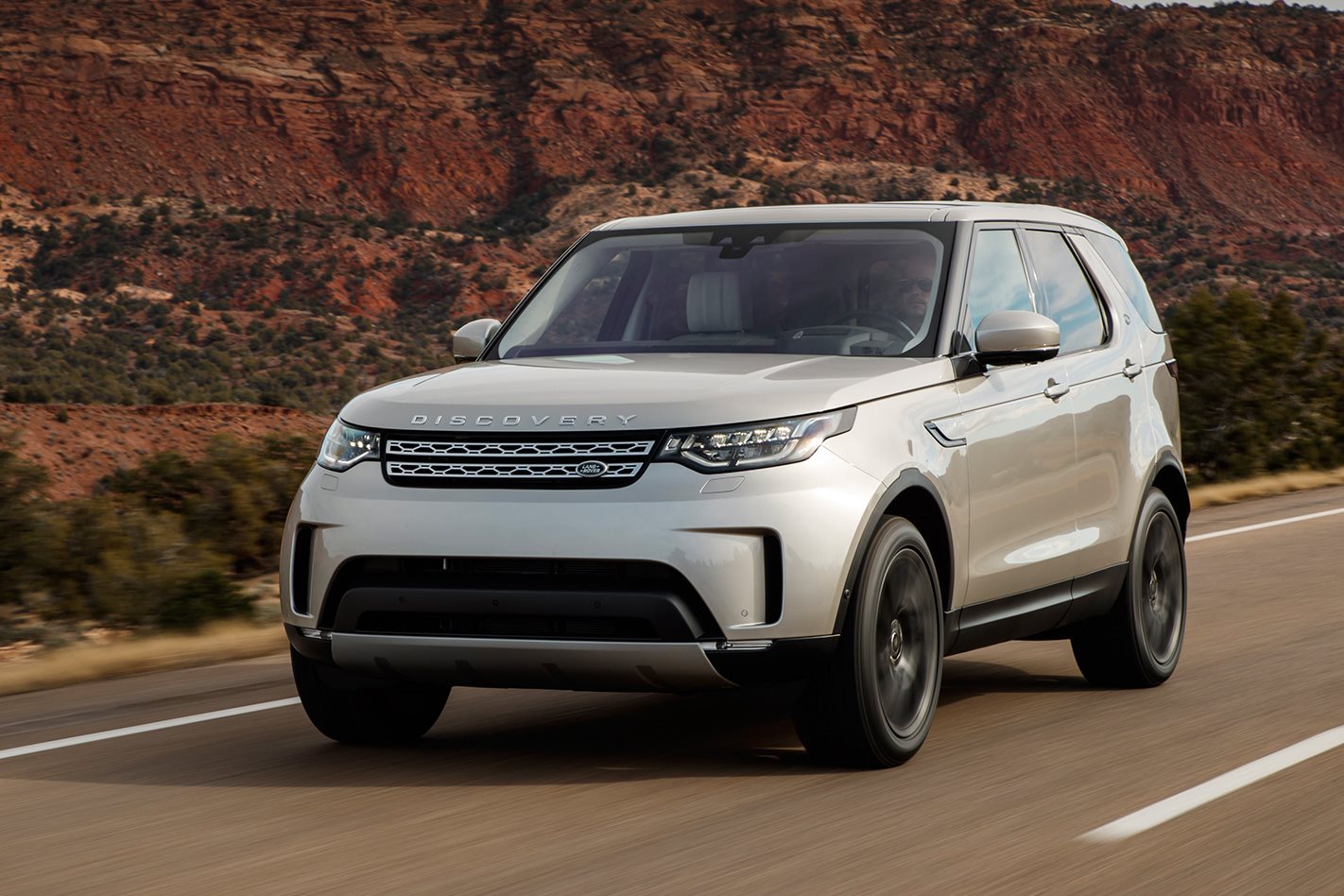It may look a lot more generic, but has the Land Rover Discovery still got what it takes to impress all those mums on the school run?
WHAT IS IT? The fifth generation of Land Rover’s three-row all-terrain wagon gets fresh and less polarising styling, and a host of comfort, safety, convenience and capability features in a line up comprising 13 variants.
WHY WE’RE TESTING IT New from the tyres up the Discovery is the Land Rover product for the adventurous family. With more generic styling, higher levels of equipment and luxury and a lower entry price than its predecessor, the latest model is sure to find plenty of buyers.
MAIN RIVALS Toyota LandCruiser 200 Series, Mercedes Benz GLS, Audi Q7, Nissan Patrol
THE WHEELS VERDICT The Land Rover Discovery is a little less country on the outside, but a lot more city-smart inside. Lighter, cheaper and more luxuriously appointed than the car it replaces, it should stand out on the school run.
PLUS: Wider range to appeal to larger audience; weight savings allow smaller engines and more equipment; lower entry level price; quality ride and refinement MINUS: Generic styling robs it of character; large diameter wheels limit off-road use; expensive and extensive options list

Land Rover Discovery has always had the high levels of equipment, performance and ability to match and exceed any of these vehicles both on and off road, but what was with the shipping container styling? And who really needs all that off road ability anyway?
The Indian-owned British brand knew this only too well so, when it came to developing the fifth generation of the model that was first seen back in 1989, it started with a clean sheet of paper.
The design of the body was planned to be more rounded and less polarising and a large model range would offer more choices for those with no intention of ever using the exceptional off road ability; and that’s most Discovery buyers.
The new Discovery range will start from $65,690 when it arrives here in the second half of this year. That base model is the Discovery S Td4 diesel five seater, but this engine variant won’t get here until a few months after the first shipment in July. The early arrivals will start with the 177kW/500Nm Sd4 and 190kW/600Nm Td6 engines in SE, HSE, HSE Luxury and First Edition variants.

That engine is Land Rover’s latest Ingenium 2.0-litre diesel engine in the base 132kW/430Nm Td4 tune and high series Sd4 tune.
There is a supercharged V6 petrol engine available in some markets but Land Rover Australia stopped offering it in the previous model Discovery due to low take-up here and won’t offer it in the new model.
Our first drive of the Discovery in the US was in the Sd4 and Td6 HSE Luxury specification vehicles.
The Sd4 engine with a single-range transfer case (no low range for off-road driving) will serve 80 per cent of Discovery buyers, those that will never venture off road or test the vehicle’s 3500kg towing capacity. It is more than adequate for the school pick up run including the extra passengers you inevitably pick up serving such duties.
The Td6 will be the choice for those wanting to branch out off road and/or tow a trailer. There is no question of the 3.0-litre V6’s superior performance on the highway, especially when overtaking, when you can feel the benefits of the torque and lower overall weight. Mated to an eight-speed automatic transmission, as is the four-cylinder engine, the V6 always has power on tap for whatever your needs.
The styling inside and out will draw attention among the luxury SUV brigade. Three-row seating is only available with the automatic air suspension package so seven seats start to add up on the base prices.

Then to really impress the other mums, you’ll want the $4800 Intelligent Seat Fold Pack. This first in the SUV world gives you powered second- and third-row seats conveniently operated from the rear doors, the cargo compartment or remotely via the Land Rover control app for your smartphone that also lets you remotely control things like heating and even remote starting.
The third-row seat is full size and able to accommodate two adults for extended trips. The rear of the Discovery is cavernous offering up 2500 litres of cargo space and 2.0 meters of length behind the front seats with the second and third rows folded.
The rear door is now a single lift-up composite piece in lieu of the traditional horizontally split tailgate.
While some might think that would do away with the convenient seat/shelf that the lower tailgate has always formed, Land Rover has cleverly added an inner tailgate that folds out when the main tailgate is open, and it is able to accommodate up to 300 kilograms.
LR’s designers have also tried to retain some Discovery traditional styling with the asymmetrical treatment on the tailgate. It’s debatable how successful they’ve been in that regard; it looks odd and clumsy now and is possibly the most controversial aspect of the new Gerry McGovern design that ties closely with other Land Rover and Ranger Rover products.
The body now rides on the aluminium architecture that Discovery shares with Range Rover and Range Rover Sport. The lighter weight of the materials plus the four-cylinder engine adds up to a total of up to 480 kilograms depending on specification.

It uses steel suspension components in lieu of the aluminium ones used on Range Rover Sport to better cope with its intended off road use.
Speaking of off road, the new Disco uses electronic traction control plus the latest version of its acclaimed and often imitated Terrain Response system, TR2. This adds an auto mode to the existing modes for Normal, Grass Gravel Snow, Mud and Ruts, Sand, and Rock Crawl.
The auto mode reads the terrain and driving style to choose the right mode for the conditions and takes the guesswork out of it for the driver. It’s a system that makes even the most inexperienced off roader look and feel like an expert.
The all-new design and extended Discovery model range was aimed to entice more buyers and Land Rover is already claiming it has 20,000 orders for the new vehicle.
In Australia that number is closer 300 to 400 at the time of the international launch, but Land Rover Australia is hoping to have up to 1000 orders on the books by the time the first ones land here in July.
Vote for the Land Rover Discovery to win the 2018 Wheels Car of the Year Readers’ Choice competition
SPECS Model: Land Rover Discovery S Sd4 Engine: 1999cc 4cyl, dohc, 16v, turbo diesel Max power: 177kW @ 4000rpm Max torque: 500Nm @ 1500rpm Transmission: 8-speed auto Weight: 2184kg 0-100km/h: 8.3sec (claimed) Fuel economy: 6.3L/100km (EU, claimed) Price: $71,560 On sale: July






